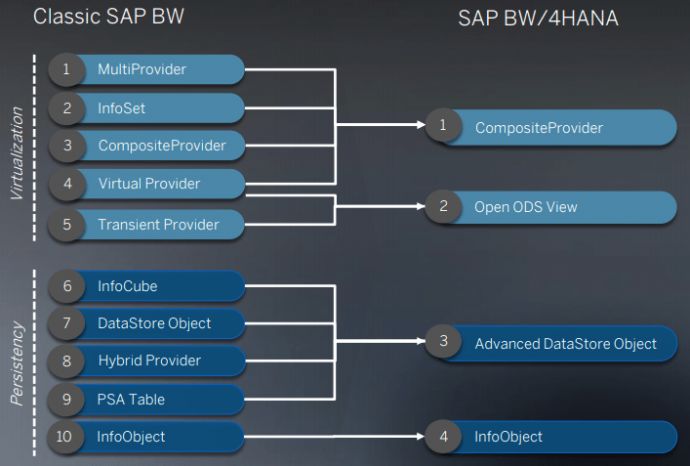After almost 20 years of existence, SAP BW (SAP NetWeaver Business Warehouse) has a successor. The good old days of defining dozens of info objects at the beginning of every BW project is over, thanks to SAP BW/4HANA. Great ! But in a world, where Big Data and real-time analysis have taken an important part of the enterprise digital business requirements, does my BW system still has a place? And if so, what is it's added value regarding other analytics tools like SAP S/4HANA ?
Asking this question, raises another one "Does my company still requires a Data Warehouse, as it has been defined by Inmon and Kimball in the first place ?" The answer is, that if you have to deal with several source systems, complex transformations, data integrations, data cleansing or even build a single version of the truth, then YES, you do require a Data Warehouse.
When it comes to SAP analytics, BW systems are often put into comparison with S/4HANA. Let's try to put these two approaches into comparison and see what answer each of them provide to what business need.
SAP S/4HANA Embedded Analytics and operational reporting
Prior to HANA, SAP BW was used as the central tool for all the enterprise reporting, operational or strategic, real-time or not. With the apparition of S/4HANA, the positioning has changed. There is now a clear border between operational and strategic reporting.
In S/4HANA, the reporting has real-time availability and focus on your key business processes. Operational data is directly available through a light-weight modeling based on virtualization. Transactions provide real time information and allows to take daily decisions based on the very latest version of data without having to reload anything.
S/4HANA Embedded Analytics brings together OLTP and OLAP to cover the operational reporting needs.
SAP BW/4HANA and strategic reporting
Since the variety of data sources have rapidly increased over the last few years, the need of a Data Warehouse that brings together data from different sources and semantically integrate them, has become a necessity now. With new techologies, such as Big Data, IoT, digitalisation, the variety, the volume and the velocity of data is increasing rapidly, but the business needs regarding all this enterprise data remains the same : crossing data from different sources (real time or not), integrate data into one single version of the truth, historize complex transformed data, export data to other systems, accessibility of a poweful OLAP engine for query calculation… In short, integrate enterprise data in order to get a harmonized overview of the entire business of a company. That's where BW/4HANA comes into picture.
SAP BW/4HANA is a logical continuation of what SAP did with BW and BW powered by SAP HANA . However, it's a totally new product, completely rewritten and optimized for SAP HANA with a new HANA-optimized content that leverages the Operational Data Provisioning Framework-based extractors, advanced DataStore objects and CompositeProvider.
One of the main improvement SAP brought in this new version is cutting down modeling objects from ten to four without taking away any of the modeling options that were available in previous versions. Other key features includes field based modeling and virtualization. The focus here is simplification, in order to reduce the number of data layers and persistency.
These optimizations, along with the compression of SAP HANA data, leads to a substantially smaller data footprint and smaller SAP HANA database size requirements.

Another improved feature is about connectivity, which was earlier considered as the weak spot of SAP BW. The introduction of HANA Smart Data Integration (SDI) has dramatically enhanced the connectivity of SAP BW to pretty much any source system.
BW/4HANA is much more open and flexible than the previous version of SAP BW. The result is an agile and complete enterprise Data Warehouse that enables faster modeling and reduces operational costs.
Conclusion
The Embedded Analytics provided by S/4HANA is a great set of tools and is certainly more efficient, faster and simpler than BW for specific operational analytics use cases, but it doesn't cover the 360° of an enterprise BI Strategy. SAP S/4HANA doesn't replace SAP BW/4HANA, and it definitely doesn't give companies the opportunity to get rid of their Data Warehouse (at least if they need strategic reporting). Both systems cover different purposes.
With S/4HANA, operational analytics return into the core and strategic analytics stays in the Data Warehouse. With SAP HANA being the common platform, both solutions complete each other and can be integrated to produce the best of the two worlds when embedded analytics is combined with a Data Warehouse use case.


